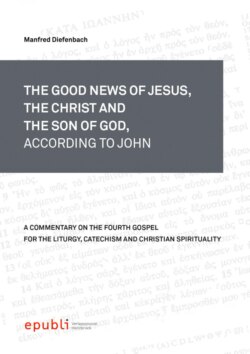Читать книгу THE GOOD NEWS OF JESUS, THE CHRIST AND THE SON OF GOD, ACCORDING TO JOHN - Manfred Diefenbach - Страница 11
На сайте Литреса книга снята с продажи.
Chapter 2
ОглавлениеThe changing of water into wine during the wedding in Cana is structured as a dialogue between Jesus and His mother (cf. vv. 3–4), her and His order to the servants (cf. vv. 5, 7–8). After the description of the changing (cf. vv. 7–8), the Evangelist tells its consequences (cf. vv. 9–10) and concludes the narrative story about the wedding at Cana in Galilee with a general note (cf. v. 11). The Fourth Evangelist inserted the “transitional verse” 12 between the story of Jesus’ first “sign” in Cana (cf. vv. 1–11) and His cleaning of the Temple (cf. vv. 13–22). A note on place (v. 14a: the Temple in Jerusalem [v. 13b]) and time (v. 13: near the Jewish Passover) as an important “theological structure element”135 of the whole Gospel (cf. 11:55) emphasizes Jesus’ action in the Temple (cf. vv. 14–16). In contrast to the Synoptic Evangelists, in John, Jesus celebrated the feast of Passover twice in Jerusalem (cf. 2:13, 23; 11:55; 12:1; 18:39) so that Jesus’ ministry was the last two or three years of the time of His life. The last Passover will be His own Passover as the “Lamb of God” (cf. John 1:29, 36; 19:14 and Exodus 12:5; Isaiah 53:7; Jeremiah 11:19), passing from this world to the God who sent Him (cf. John 13:1). In contrast to the synoptic gospels, the Evangelist of the Fourth Gospel placed this episode at the beginning of Jesus’ ministry – from Jerusalem (cf. vv. 13–25) to Jerusalem (cf. 11:55; 12:1). However, the three Synoptic Evangelists describe Jesus’ (non-verbal) action in the Temple (cf. vv. 13/14–16) and His (verbal) legitimation (cf. vv. 18–20) toward the end of His life, in face of His Passion and Death (cf. Mark 11:15–17; Matthew 21:12–13; Luke 19:45–46). Three comments by the Fourth Evangelist in verses 17, 21–22 and 23–25 – here as “transitional verses” like in verse 12 – come before and after the discussion between Jesus and the Jewish Temple authorities in Jerusalem (cf. vv. 18–20136). The structure of John 2:13–22, 23–25 is as follows:
v. 13: Setting of Jesus’ “Temple protest action”
vv. 14–16: The Temple purification/cleansing by Jesus
v. 17: First comment of the Fourth Evangelist
vv. 18–20: Jesus’ hearing by the Jewish Temple “police” as a dialogue
vv. 21–22: Second comment of the Fourth Evangelist
vv. 23–25: Third comment of the Fourth Evangelist
